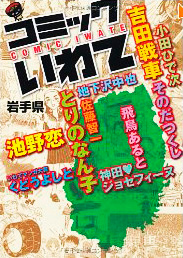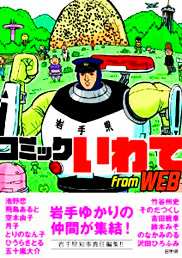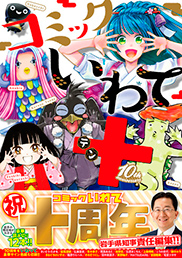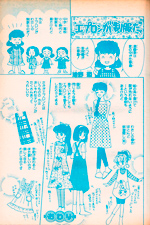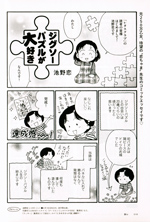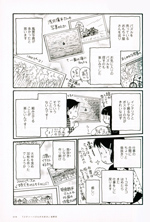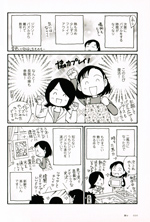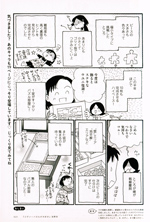Ikeno Koi
Ikeno Koi (池野 恋) is the amazing writer and artist who created the world of Tokimeki Tonight. She was born on April 16th, 1959 in Iwate prefecture, and made her debut as a manga artist in 1979 with Happy End Monogatari. She continued to publish many stories in Shueisha's Ribon magazine until around 1999, and has since worked chiefly in Cookie, Shueisha's shōjo magazine for older readers. Some of her other popular works include Nurse Angel Ririka SOS (original concept by Akimoto Yasushi) and Heroine ni naritai.
Most recently, she drew the autobiographical series Tokimeki manga-michi, which was very well-received by fans. She has also published short stories in Comic Iwate, a local magazine for manga artists from Iwate prefecture. She still resides in Iwate, and is married with two children.
Below, I've compiled a list of her published manga works outside of Tokimeki and its various spin-offs. Please refer to the works list for all of Ikeno's manga works listed chronologically.
Chotto otogibanashi (1980)
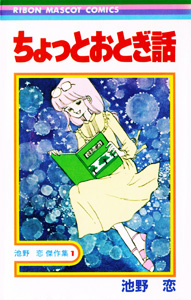
A collection of five early one-shots. This was previously out of print, but is now available as an ebook.
Chotto otogibanashi (1980, Ribon July issue)
The story of a girl who dreams of becoming a children's book author and meets a devil and an angel. It has comedic moments but also dramatic moments that reminded me of the later parts of the Ranze arc.
Happy end monogatari (1979, Ribon new year's special issue)
Ikeno made her debut as a manga artist with this one-shot. It's a comedy about a guy who gets stalked by a girl who thinks they're in love with each other, and agrees to date her when her father tells her she doesn't have long to live.
Doyō no gogo wa hōzue tsuite (1979, Ribon summer special issue)
A romantic story about a girl who falls in love with a guy who called her phone accidentally. I think this is the most typical shōjo manga/otome-tique story I've read by Ikeno; the emphasis on romance, the quirky way the hero and heroine meet, and the tragic past of the hero really reminded me of Tabuchi Yumiko's manga.
Telepathy ni goyōjin! (1979, Ribon November issue)
A historical romantic comedy about a Meiji-period young man who falls in love with an young aristocratic girl and studies telepathy in order to tell her how he feels. It's very comedic, and you can tell Ikeno incorporated fantastical elements in her stories from very early on.
Tonari no one pattern (1980, Ribon March issue)
The story of a girl who lives next to a father and son family who are trying to develop a time machine.
Mai-chan non stop (1981)
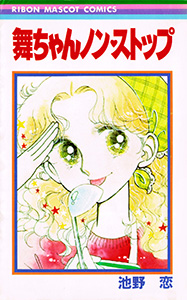
A tankōbon collecting all three chapters of Ikeno's first serialized manga Mai-chan non stop, as well as an unrelated one-shot. This is currently out of print.
Mai-chan non stop (1981, Ribon January-March issues)
Mai travels to Tokyo to find Shū, a childhood friend she promised to marry when they grow up, but when she finds Shū, it turns out he has joined the yakuza. Will Mai succeed in capturing Shū's heart, and will his yakuza gang be able to remain pacifists when a rival gang starts invading their territory?
Ojama-mushi 1/2 (1981, Ribon June issue)
High school girl Saka has a best friend, Natsumi, who doesn't seem interested in boys at all. But when a French exchange student moves in with Saka's family, it seems that both Saka and Natsumi start developing special feelings for him... but are those feelings love?
Mechanko kyōshitsu (1982)
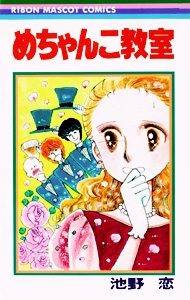
A tankōbon collecting all five chapters of Ikeno's second serialized manga. This was previously out of print, but is now available as an ebook.
Mechanko kyōshitsu (Ribon September 1981-January 1982)
A school comedy about a high school girl and her big sister who is shy and very traditionally feminine, but also incredibly strong and convinced that she will never be able to marry because of this un-womanly feature. The protagonist tries to set her sister up with her teacher while also dealing with issues of her own.
Heroine ni naritai (1991)
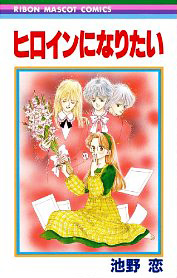
A tankōbon collecting all three chapters Heroine ni naritai and a one-shot. The original tankōbon is out of print, but is now available as an ebook.
Heroine ni naritai (Ribon January 1990-March 1991 issues)
A short series that ran in Ribon between the Narumi and Aira arcs of Tokimeki. This is my favorite work by Ikeno outside of the Ranze arc of Tokimeki: it's a collection of three self-contained short stories about three best friends who each struggle with their personal issues as well as to find love. There are no fantasy elements to this story, which is rare for Ikeno, but all her characters are well-developed and likeable and you can't help but become engrossed in their personal struggles. More than any other work, I think this series shows Ikeno's skills as a shōjo manga writer. The art is also fantastic.
Kimagure time machine (1982, Ribon April issue)
An old one-shot never previously included in a tankōbon. It's a romantic comedy about the heroine's father, a scientist, creating a time machine and bringing an Edo-period samurai to the modern world.
Nurse Angel Ririka SOS (1995-1996)
A series that ran in Ribon concurrently with a TV anime based on basic ideas by Akimoto Yasushi. It is believed that Ikeno was instrumental in developing the characters and designs of the series. It's the story of Moriya Ririka, a fourth-grader who transforms into the Nurse Angel in order search out the "flower of life" and save the world from the evil Dark Jokers. The series was previously out of print but is now available as an ebook.
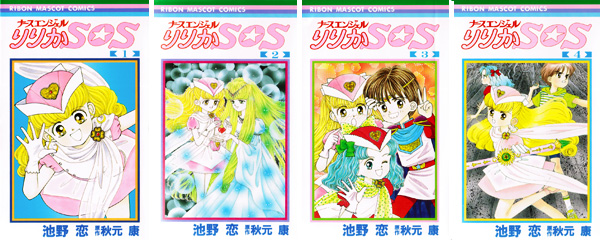
Oshiete Nanoka (1996-1998)
This is Ikeno's only original long-running series outside of Tokimeki and its spin-offs. It's the story of four siblings who find out they have a secret connection to a fantasy world. It was previously out of print but is now available as an ebook.
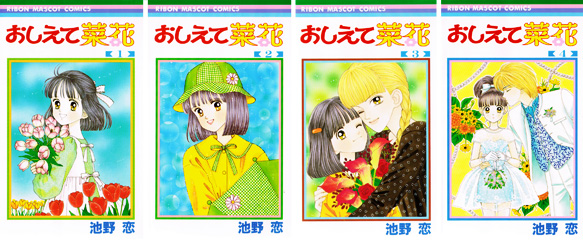
Kagami no mukōgawa (1996, Ribon Teens September issue)
A short story included in volume 3.
Mamotte gomenne (1998, Ribon Original August issue)
A short story included in volume 4.
Apron ga seifuku da (Ribon Teens May 1997)
A one-page essay manga. Never included in a tankōbon.
Usotsuki na season (1999)
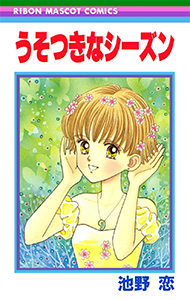
A tankōbon collecting the series Usotsuki na season and a one-shot. This was previously out of print but now available now as an ebook.
Usotsuki na season (Ribon Original December 1998 - June 1999)
A four-chapter series about a girl who can see ghosts, and the supernatural troubles she solves at her new school while making new friends.
Manatsu no door (Ribon natsuyasumi otanoshimi zōkangō 1998)
A short one-shot about a girl who is dying of a heart condition and has a mysterious experience during surgery.
Misty Boy (2001)
A tankōbon collecting the series of the same name. I do not own this yet — details coming soon! This is out of print.
Tokimeki tanpenshū (2009)
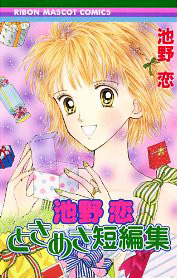
A collection of older one-shots published to commemorate Ikeno's 30th anniversary. The earliest one-shot was originally published in 1985, while Ikeno was still drawing the Ranze arc of Tokimeki, and the latest was published in 2001, after the end of Tokimeki. It also includes a 10-page interview with Ikeno. The original tankōbon is out of print, but is now available as an ebook.
Osamu ING (1985, Ribon Original early spring issue)
Yume miru tamago (1993, Ribon Original August issue)
Lady ♥ Angel (2000, Ribon Original February issue)
Ring Ring (2000, Cookie July issue)
Mafuyu no chime (2001, Ribon winter break special issue)
Summaries coming soon!
if no frame (2010)

A tankōbon collecting all five chapters of the if no frame series and two one-shot sequels to Tokimeki Tonight and Tokimeki Midnight. The original tankōbon is out of print, but is now available as an ebook.
if no frame (2010-2001, Cookie)
A series of interconnected short stories about five girls and women who wander into a mysterious room with five mysterious men, and look into the "frame of if" which reveals their possible futures.
Itsumo tokimeite (2009, Cookie September and October issues)
Please refer to the Ranze page and the Tokimeki Midnight page for more info.
Wakamurasaki (2013)
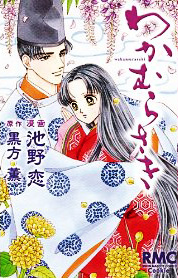
A series of one-shots set in the Heian era of Japan featuring a young Murasaki Shikibu (the author of The Tale of Genji). The story was written by Kurokata Kaoru. This is available both in print and as an ebook.
Murasaki Shikibu no jikenbo (2011, Cookie September issue furoku)
Shoya to sugoroku (2012, Cookie February issue)
Ruri to sango (2012, Cookie March issue)
Kyoko no Wakamurasaki nikki (2012, Cookie June issue)
Kohime-sama to deatta hi (2012, Cookie August issue)
Summaries coming soon!
Tokimeki manga-michi (2016)
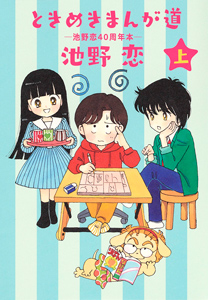
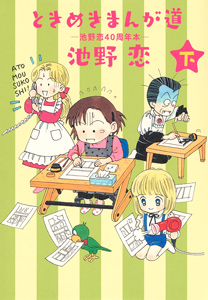
A biographical manga about Ikeno's life, focusing on her childhood, how she became a manga artist, and the creation of Tokimeki Tonight. The two-volume tankōbon also feature several color pages, black and white ads from Ribon magazine, and two previously uncollected short stories from early on in Ikeno's career. This is a fun, insightful series, and the tankōbon with all their special features are a must own for fans. They are available both in print and as ebooks.
M.Y-sama ni sasagu (1979, Ribon May special issue)
Ikeno's first one-shot after making her debut with Happy-end monogatari. A cute story about a boy who pretends to be perfect in front of his peers, and a girl who is unimpressed by his act.
Shōbu ari! (1980, Ribon October issue)
A story about a girl from the drama club falling in love with a troubled boy from the kendō club.
Jigsaw puzzle ga daisuki (2018)
Ikeno wrote a four-page essay comic about her hobby (jigsaw puzzles) for the January 2018 issue of cooking magazine Lettuce Club. This was never included in a tankōbon and the magazine is now out of print.
Bloody Bride — kyūketsuki no konkatsu (2020)
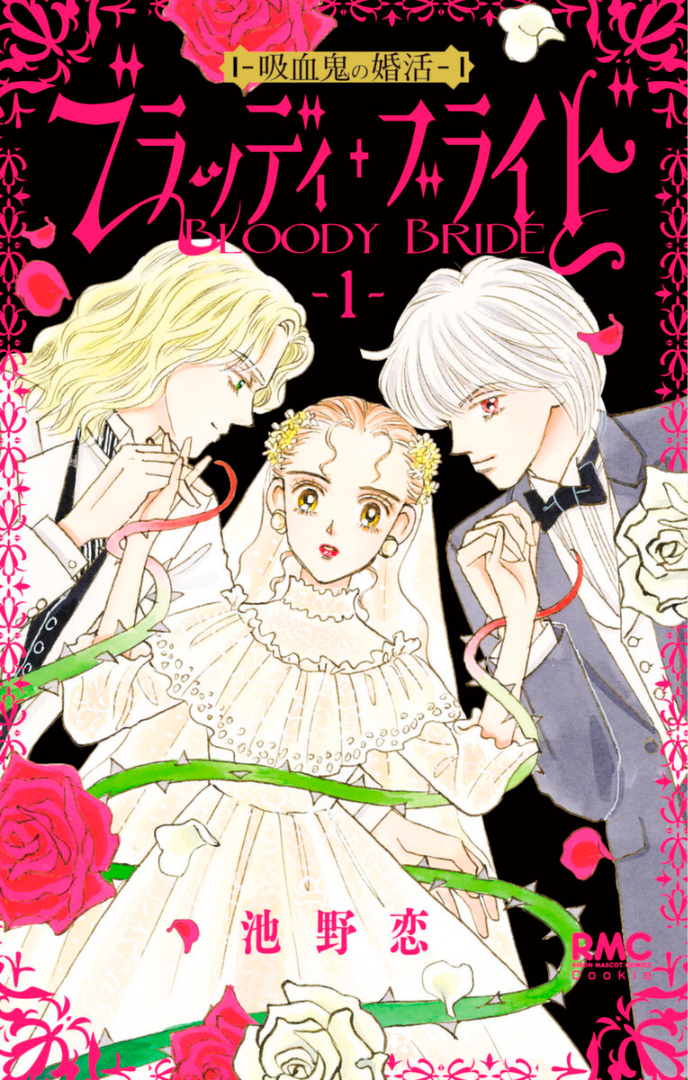
A tankōbon collecting three chapters of the Bloody Bride series and a one-shot. This is available both in print and as an ebook.
Bloody Bride — kyūketsuki no konkatsu (2020-2021, Cookie May, September, and January issues)
The story of two vampires looking to find their true love, and an ordinary woman who gets involved in their shenanigans. It's a very cute series, but only three chapters were serialized and there is no word yet on a sequel.
Utatane no Roze (2009, Ribon fantasy special issue)
A short story about a cute boy vampire, which themes tie into Bloody Bride.
Comic Iwate (2011-2021)
Comic Iwate is a magazine published by Iwate prefecture, and it features manga by artists from Iwate as well as manga about Iwate. Four issues have been published so far, in 2011, 2012, 2014, and 2021. Ikeno has contributed a series of one-shots about two boys inspired by the famous Iwate-born poet and novelist Miyazawa Kenji, and you can read two of her stories online at Comic Iwate WEB here and here.
